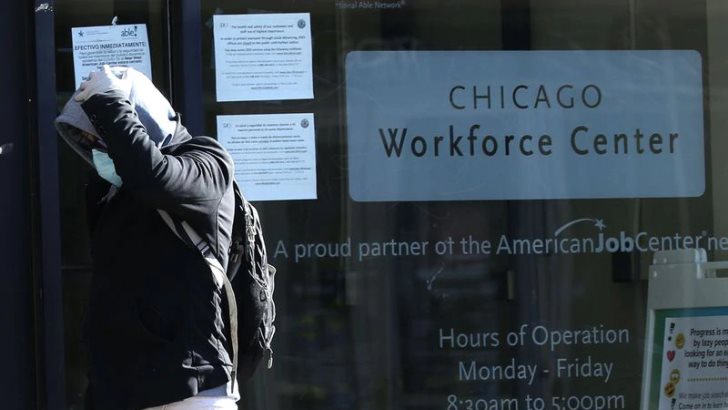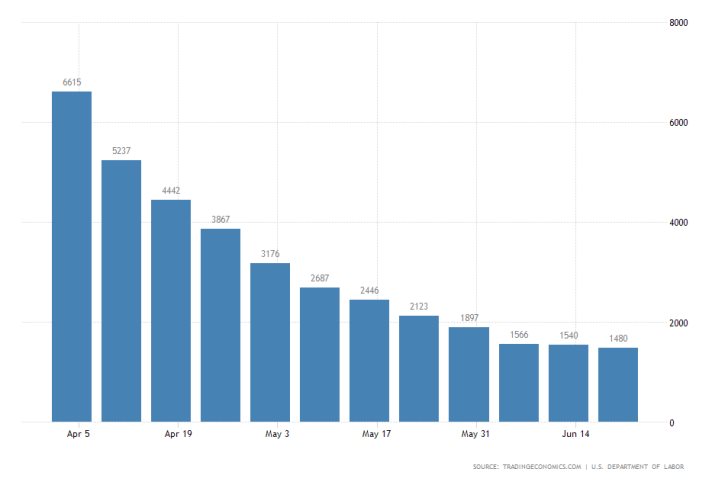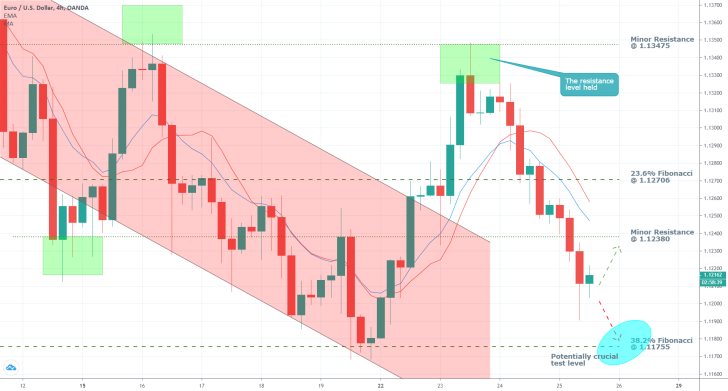
Earlier today, the US Department of Labor released its most recent findings concerning the observed change in the number of filed unemployment claims over the previous weeks.
According to the findings of the labour report, 1.480 million people claimed benefits versus 1.320 million projected. The excess of 160 thousand claims marks the second consecutive week of worse-than-expected results.
Even still, an examination of the monthly performance reveals that the overall numbers have been falling steadily since the wake of the coronavirus crisis in early-April.

The disturbing news is that for the last three weeks, the recorded data has not been showing any signs of further slowing down as the registered numbers fluctuate around 1.5 million.
These statistics underpin the deepening crisis in the US labour market, which is unlikely to follow its robust performance from last month. In May, the US unemployment rate even managed to fall by 1.4 per cent.
In other words, the pace of the US economic recovery appears to be stagnating for the time being in relation to the observed labour data. With no available evidence to substantiate the expectations for continually falling unemployment, the headline rate is likely to remain above 10 per cent in the third quarter.
This would mean that in regards to employment, the FED would have to deal with muted economic conditions that are even worse than the ones used in most baseline economic models, especially the ones used for the stress tests in the banking sector.
These encompass the same baseline scenarios against which the Board of the Federal Reserve makes projections for an eventual recovery. It follows that a likely stagnation in employment growth could slow down the path to eventual recovery quite markedly.
The data becomes even more troubling given the recent resurgence in newly confirmed COVID-19 cases in the US, which could spell problems for the still reeling financial markets in the longer-term.
Meanwhile, the euro continues to struggle against the recently strengthened dollar. The demand for the greenback was bolstered as fears of a potential second epidemic wave intensified over the last several days.
After the current downswing on the EURUSD is concluded, the price action is likely to head back north, and towards the 23.6 per cent Fibonacci retracement level at 1.12706.
The underlying fundamentals in support of the euro substantiate these anticipations.

Trendsharks Premium
Gold is undergoing a correction, as investors take profits to offset losses from falling stock prices, impacting their margins. However, we anticipate a renewed wave of [...]
The Swiss stock market index is mirroring its global counterparts, such as Germany 40 and US100, experiencing a sharp decline following the announcement of new [...]
We’re analyzing the weekly chart to grasp the broader market trend. Over the past three years, the US30 index has surged by 17,000 points, often resembling a nearly straight [...]
Over the past week, the DAX has experienced a sharp decline, plunging by an astonishing 3,400 points. This downward movement is not isolated, as its international counterparts, such as the UK100 and US100, are also facing significant [...]
EURUSD recently formed a double top at 1.0930, signaling a potential trend reversal, and has since begun a correction. After a 600-pip rally since early March, a pullback at this stage is both expected and healthy. Given these conditions, we are placing a [...]
Since early March, EURJPY has surged nearly 1,000 pips, providing us with several excellent trading opportunities. However, as the rally matures, many early buyers are beginning to take profits, leading to a noticeable slowdown in the uptrend. On Friday, the pair formed a [...]
The AUDJPY currency pair continues to be dominated by bullish momentum, as multiple golden cross patterns reaffirm the strength of the ongoing uptrend. Despite this, we are witnessing a much-needed [...]
The EURAUD currency pair appears to be undergoing a trend reversal, signaling a potential shift in market direction. A notable technical development is the formation of a Death Cross on the chart, a widely recognized bearish indicator that typically suggests a [...]
After securing an impressive 200-pip profit last week, the EURJPY currency pair is now undergoing a southward correction, retracing some of its recent gains. Despite this temporary pullback, the Golden Cross remains intact, reinforcing our view that the overall trend continues to be [...]
The appearance of a Golden Cross in Silver strengthens our analysis that the metal is currently in a strong uptrend, indicating further bullish momentum in the market. This technical pattern, where the short-term moving average crosses above the [...]
This trade presents a considerable level of risk and can be classified as an opportunistic move based on recent price action. The GBPUSD currency pair has experienced a substantial bullish rally, surging by nearly 500 pips in a strong upward movement. However, after this extended period of appreciation, the pair is showing signs of a potential [...]
The anticipated Death Cross on the SMI20 appears to be failing as price finds strong support at the 23% Fibonacci retracement level. After testing this area, the index has shown bullish strength, printing several large green candles, signaling an increase in [...]
A Golden Cross has just appeared on the USDJPY chart, signaling a potential bullish move. This technical pattern occurs when the 20 period moving average crosses above the 60 period moving average, a widely recognized indication of increasing [...]
After 2 months of a down trend, we finally see some indications of price recovery for Oil. The golden cross, a historic buy signal, supports this [...]
For the past month, the German DAX40 has experienced a remarkable 10% surge, reflecting strong bullish momentum. Despite ongoing market volatility and frequent pullbacks, every dip continues to attract fresh buyers, reinforcing the [...]
Oil continues its downward trajectory, despite occasional pullbacks. The overall trend remains bearish, reinforced by multiple Death Cross patterns, a classic sell signal indicating further weakness. Adding to this bearish outlook, the critical [...]
Over the past few days, gold has experienced a sharp decline of more than $100. This downturn can be attributed in part to traders securing profits to manage their margins, which are under strain due to the significant drop in major indices. Currently, gold has fallen below the [...]
The NASDAQ 100 index is showing strong bullish momentum, as evidenced by the formation of a Golden Cross on the chart. This classic buy signal occurs when the short moving average crosses above the long term moving average, suggesting that upward momentum is [...]
The EURAUD currency pair has encountered a significant resistance level, failing to break above the critical 61% Fibonacci retracement level. This suggests that bullish momentum is weakening, reinforcing the case for a potential downward move. Given this technical setup, we favor entering a [...]
The UK100 is experiencing a remarkable rally! Over the past few weeks, the British stock market index has surged nearly 800 points. Each minor dip has attracted more buyers, fueling the bullish momentum. However, since last week, we’ve observed a slight [...]




















